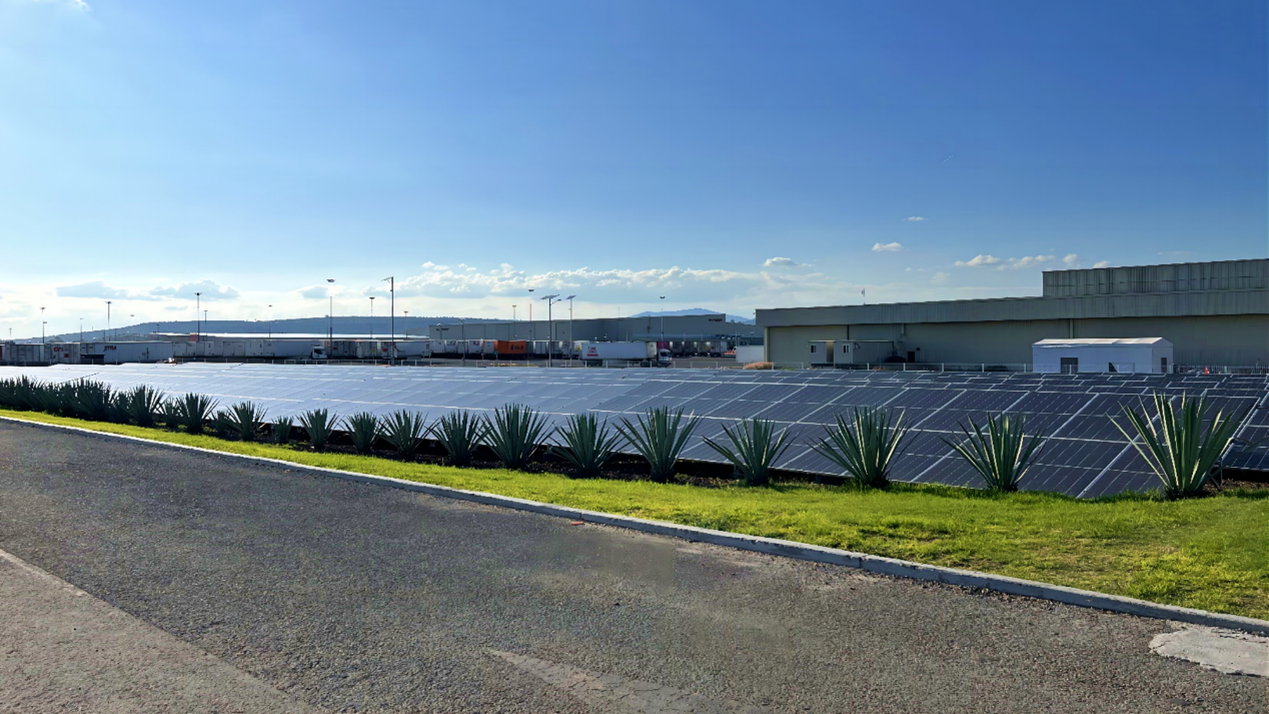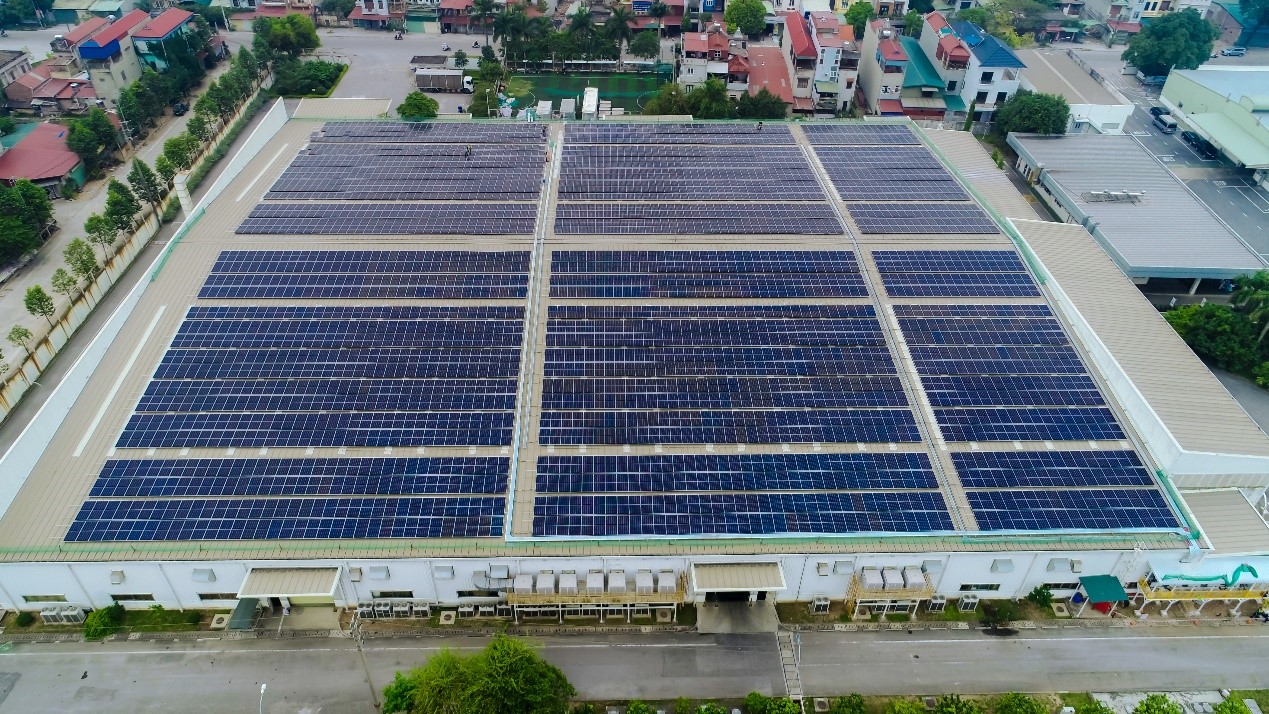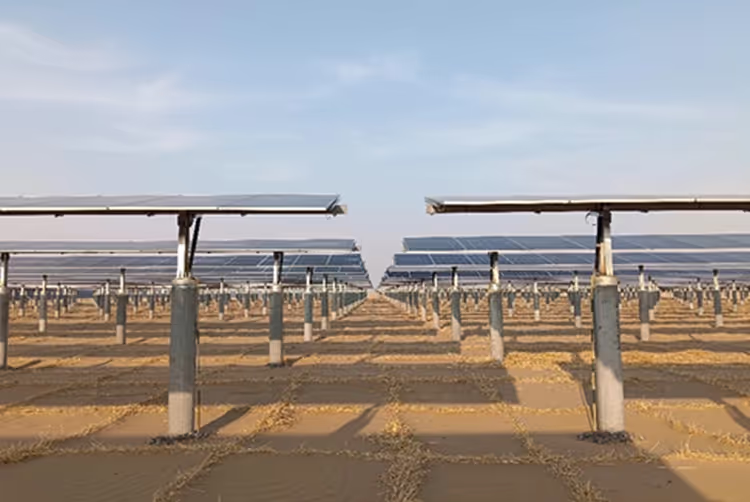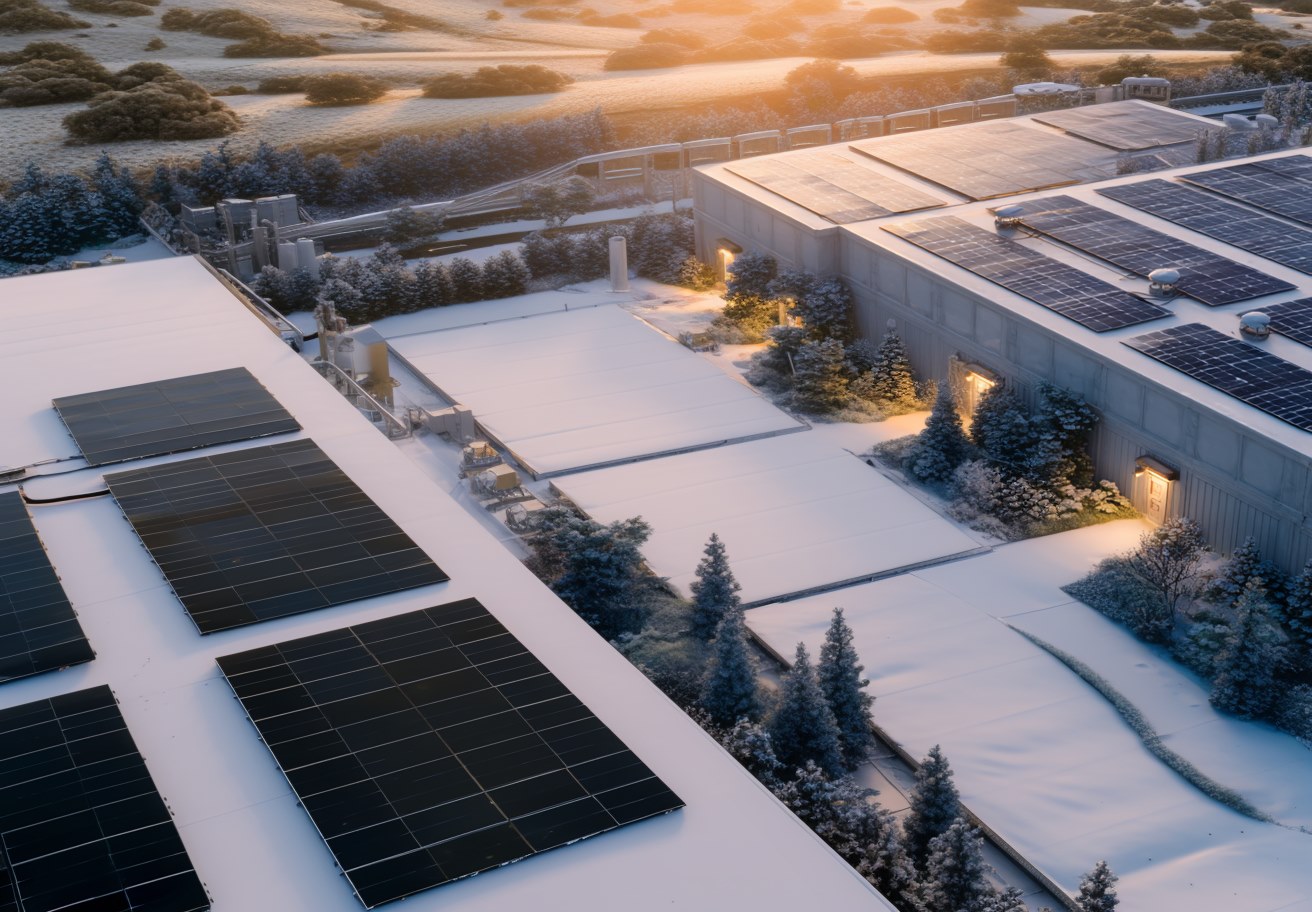Série Solar Strategies in Practice : le choix écologique d'un géant industriel mondial - Comment Toyota a activement intégré l'énergie solaire à sa stratégie globale de développement durable

Date
August 25, 2025
read time
5
Minutes
Subscribe to the LONGi Newsletter
Récemment, nous avons lancé le Les stratégies solaires en pratique-Series, une initiative de contenu qui met en lumière la manière dont les grandes entreprises intègrent l'énergie solaire sur site dans leurs opérations, leur planification des investissements et leurs objectifs de durabilité. Aujourd'hui, nous commençons avec Toyota, un constructeur automobile de renommée mondiale.
Dans la course mondiale vers un avenir carboneutre, les véritables leaders non seulement se fixent des objectifs ambitieux, mais excellent également dans l'identification de voies efficaces. Toyota, une entreprise du Fortune 500 et une référence dans l'industrie automobile, redéfinit le paysage énergétique de son réseau de production mondial grâce à ses philosophies de rationalisation et d'amélioration continue qui lui sont propres. Toyota utilise l'énergie solaire sur les toits de ses sites de production, des systèmes photovoltaïques et batteries pour la logistique et des sources d'énergie renouvelables dans toutes ses opérations européennes, faisant de l'énergie solaire un outil essentiel pour réduire les émissions opérationnelles. LONGi a établi un partenariat avec Toyota par le passé pour soutenir divers projets.
Explorons l'avance de Toyota et la manière dont l'énergie photovoltaïque sur les toits est en train de devenir un pilier clé de la mise en œuvre de son ambitieuse stratégie « Environmental Challenge 2050 », une feuille de route à long terme qui vise à éliminer les émissions de CO₂ provenant des véhicules et de la fabrication, à minimiser l'impact environnemental tout au long du cycle de vie et à contribuer à un impact net positif sur la société d'ici 2050.
Le défi 2050 de Toyota commence sur le toit
L'engagement de Toyota en faveur de l'environnement est profondément ancré dans son histoire. Depuis le lancement de la révolutionnaire Toyota Prius Hybrid, la première voiture de tourisme hybride produite en série au monde, jusqu'à ses travaux novateurs à la pointe de l'hydrogène avec son véhicule électrique à pile à combustible à hydrogène (FCEV) baptisé Mirai ou sa gamme de véhicules électriques à batterie (BEV) sous la marque « bZ » (beyond Zero), Toyota a toujours été un pionnier en matière de transport propre. Aujourd'hui, cet engagement s'étend au-delà de ses produits et s'étend au cœur de l'ensemble de sa chaîne de valeur : la fabrication.
L'ambitieuse stratégie « Toyota Environmental Challenge 2050 » de Toyota présente une vision précise de l'avenir.
- Une forte réduction de 90 % des émissions de CO2 sur le cycle de vie des nouveaux véhicules (par rapport aux niveaux de 2010).
- Neutralité carbone opérationnelle atteinte sur l'ensemble des bases de production mondiales
- Mettre en place un système de fabrication et de consommation utilisant le recyclage des ressources
Pour un géant mondial comme Toyota, atteindre la neutralité carbone ne nécessite pas une solution unique, mais une combinaison de solutions adaptées aux conditions locales et fournissant des résultats rapides. Confrontée à des objectifs pressants de réduction des émissions de carbone, Toyota comprend l'importance primordiale de l'efficacité. Où les entreprises peuvent-elles trouver des solutions éprouvées qui se déploient rapidement et permettent de réduire considérablement les émissions de carbone opérationnelles ? La réponse se trouve juste au-dessus d'eux : sur les toits de leurs usines et de leurs installations. Voici une sélection des initiatives solaires de l'entreprise.
Une installation solaire de 500 kW alimente la production de Toyota au Mexique
Dans l'usine Toyota d'Apaseo el Grande à Guanajuato, qui a commencé à produire le pick-up Tacoma fin 2019, un système solaire photovoltaïque avancé sur le toit a été installé à l'aide de panneaux LONGi d'une capacité d'environ 499,22 kW (près de 0,5 MW). Le système fournit de l'électricité propre pour soutenir les opérations de l'usine, fournissant environ 800 MWh d'énergie renouvelable par an et réduisant les émissions de carbone d'environ 410 tonnes par an, illustrant ainsi l'engagement de Toyota en faveur de pratiques industrielles durables dans son empreinte de production.
Il fournit non seulement de l'électricité propre à la chaîne de production, mais incarne parfaitement la philosophie de gestion « genchi genbutsu » de Toyota, qui consiste à s'immerger sur place pour identifier les solutions optimales les mieux adaptées aux conditions locales.

L'énergie verte dans la chaîne d'approvisionnement : Toyota Boshoku est en tête grâce à l'énergie solaire sur les toits
La révolution verte de Toyota s'étend à l'ensemble de sa chaîne d'approvisionnement. Au Vietnam, Toyota Boshoku, l'un des principaux fournisseurs d'équipements d'intérieur, a considérablement réduit son empreinte carbone grâce à un projet photovoltaïque sur les toits de 1,47 MWp. Installé par LONGi et Solar Electric Vietnam (SEV), le système devrait générer plus de 1 582 MWh d'électricité propre par an, contribuant ainsi à réduire les émissions de carbone de l'entreprise d'environ 1 338 tonnes par an, conformément à son objectif annuel de réduction du CO₂ de 2 %. Ce projet illustre la philosophie de Toyota : une véritable protection de l'environnement doit englober l'ensemble du cycle de vie du produit.

En Europe, l'empreinte solaire de Toyota couvre de nombreux sites de fabrication et opérationnels, contribuant directement à ses objectifs régionaux de décarbonisation.
Le projet solaire de Toyota Deeside permet d'économiser 1 800 tonnes de CO₂ par an
À l'usine de moteurs de Deeside, dans le nord du Pays de Galles, Toyota a mis en service une installation solaire transformatrice en 2014, comprenant environ 12 680 panneaux répartis sur une superficie de près de huit terrains de football (source : Toyota UK Magazine). Ce générateur produit 3,48 millions de kWh par an, fournit jusqu'à 10 % de l'électricité de l'usine et alimente la production de quelque 22 500 moteurs par an (source : Toyota UK Media). Il réduit également les émissions de CO₂ de 1 800 tonnes par an, soit une économie à peu près égale au poids de 1 260 berlines Auris (source : Toyota UK Media). Installé en seulement trois mois, le projet souligne l'initiative Sustainable Plant de Toyota : intégrer les énergies renouvelables pour réduire les impacts environnementaux tout en améliorant l'efficacité opérationnelle (source : Toyota UK).
Le chauffage solaire de l'air et les panneaux photovoltaïques sur les toits renforcent la durabilité de l'usine Toyota d'Onnaing
À l'usine Toyota d'Onnaing, dans le nord de la France, l'entreprise a mis en œuvre un système innovant SolarWall® : une solution de chauffage solaire de l'air installée sur la façade sud du bâtiment. Cette technologie capte l'énergie solaire thermique pour préchauffer l'air de ventilation de l'usine, avec des avantages tout au long de l'année : jusqu'à 25 % d'économies d'énergie annuelles et une réduction d'environ vingt tonnes d'émissions de CO₂ par an par rapport aux méthodes de chauffage classiques. Le système SolarWall® complète d'autres mesures écologiques déjà en place, telles qu'une membrane photovoltaïque installée sur le toit de son bâtiment logistique, le recyclage des eaux usées, des projets de biodiversité et des programmes d'éducation environnementale. Onnaing se positionne ainsi comme l'une des usines durables phares de Toyota, où l'efficacité, les énergies renouvelables et l'engagement communautaire convergent. (Source : solarwall.com)
TMHE avec un programme solaire transfrontalier sur les toits avec stockage d'énergie
Au cœur de ses efforts en matière de développement durable, Toyota Material Handling Europe (TMHE) a lancé un ambitieux programme d'énergie solaire en partenariat avec Eneo Solutions, prévoyant des installations photovoltaïques sur les toits de plusieurs sites de production et administratifs européens, à commencer par son siège social à Mjölby, en Suède, dans le cadre de l'un des premiers programmes solaires PPA transfrontaliers dans le secteur photovoltaïque sur les toits (source : Lectura Press). Cette initiative donne une « troisième vie » aux batteries lithium-ion basées sur des modules, en les transformant en stockage d'énergie stationnaire pour l'énergie solaire, garantissant ainsi la continuité d'opérations telles que la recharge de chariots élévateurs électriques, même en l'absence de lumière solaire. Pour étendre encore cette présence, la branche française de TMHE, Toyota Material Handling France, s'est associée au développeur solaire Alight pour mettre en service un système de toit de 300 kWc sur son site de Bussy-Saint-Georges. Cette installation, composée de 790 panneaux solaires, produit environ 323 MWh par an, soit 25 % de la consommation annuelle d'électricité du site (source : pv magazine France).
Toyota : une électricité 100 % renouvelable en Europe
Depuis 2019, Toyota Motor Europe gère toutes ses opérations (bureaux, centres logistiques, usines) avec de l'électricité 100 % renouvelable, grâce à une combinaison d'achats d'énergie solaire sur site et d'énergie renouvelable. Cela a permis d'éliminer les émissions Scope 2 de Toyota en Europe, conformément à sa feuille de route pour la neutralité carbone.
Pourquoi l'énergie solaire est au cœur des plans de développement durable des entreprises
L'énergie solaire joue un rôle direct dans le défi 3 de la stratégie « Défi environnemental 2050 » de Toyota : zéro émission de CO₂ en usine. Il fixe l'objectif de parvenir à une fabrication neutre en carbone. Il y a une raison évidente pour laquelle Toyota a fait de l'énergie solaire un élément fondamental de sa stratégie. Et en fait, ils ont du sens pour toutes les entreprises en Europe et au-delà.
- Déploiement rapide : en utilisant l'espace existant dans le bâtiment, le système s'installe rapidement et commence à apporter des avantages en matière de réduction des émissions de carbone dans un court laps de temps.
- Réduction directe des émissions : la production d'électricité sur site réduit considérablement la dépendance des opérations de l'usine à l'égard des combustibles fossiles connectés au réseau, réduisant ainsi directement les émissions de carbone de niveau 2.
- Amélioration de l'efficacité et de la résilience : réduit les coûts énergétiques et, dans une certaine mesure, améliore la stabilité de l'approvisionnement énergétique.
- Les toits à faible charge peuvent être inclus dans la stratégie solaire : auparavant, ces toits étaient exclus des projets solaires en raison de restrictions de poids, mais grâce au développement de modèles de modules légers, ils peuvent désormais être facilement intégrés, permettant aux usines, aux entrepôts et aux bâtiments anciens de bénéficier de la production d'énergie renouvelable.
Des alliances puissantes : choisir des partenaires de grande valeur pour favoriser la transformation
Toyota est le moteur de la transformation énergétique à l'échelle mondiale et ses critères de sélection des partenaires sont extrêmement stricts. Les fournisseurs doivent non seulement fournir des produits de haute qualité, mais également proposer des solutions techniques parfaitement conformes à l'engagement inébranlable de Toyota en matière d'efficacité, de fiabilité et de durabilité. Pour des projets au Mexique et au Vietnam, Toyota s'est associé à LONGi. Les produits efficaces et fiables ainsi que l'expertise technologique de LONGi ont aidé Toyota à maximiser la production d'énergie propre dans un espace limité sur les toits, garantissant ainsi la stabilité à long terme des projets et atteignant les objectifs de réduction des émissions prévus. Ces efforts sont essentiels pour soutenir la vision environnementale ambitieuse de Toyota.
« Nous voulons créer non seulement de meilleures voitures, mais aussi une meilleure société. »
De la révolution hybride initiée par la Prius aux centrales photovoltaïques sur les toits des usines du monde entier, Toyota construit un écosystème durable englobant les produits, la fabrication et l'énergie. Le président Akio Toyoda a dit un jour : « Nous voulons créer non seulement de meilleures voitures, mais aussi une meilleure société ». Cette vision est en train de devenir réalité grâce à l'action.
Le choix de Toyota envoie un message clair aux entreprises européennes : sur la voie de la neutralité carbone, les panneaux photovoltaïques sur les toits constituent une initiative stratégique rapide, efficace et multiforme éprouvée par des géants industriels mondiaux. Le choix de partenaires tels que LONGi, capables de fournir des solutions à forte valeur ajoutée, nous aidera à gérer cette transformation verte de manière plus efficace et plus fiable, et ensemble, nous avancerons vers un avenir durable.
Les modules C&I de LONGi : transformer les toits en actifs énergétiques
Pour les entreprises qui souhaitent exploiter tout le potentiel de leurs toits, LONGi propose deux solutions sur mesure : le Hi-MO X10 Guardian Light Design pour les toits à faible charge et nos modules C&I à double ou simple vitrage pour les structures conventionnelles. Les deux reposent sur une technologie de contact arrière avancée, offrant une efficacité élevée, une fiabilité à long terme et de solides garanties. Grâce à ces solutions, votre toit peut devenir un actif résilient et propre en matière d'énergie pour les décennies à venir.
🔗 Notre module de conception d'éclairage
📩 Contactez-nous à europe@longi.com







